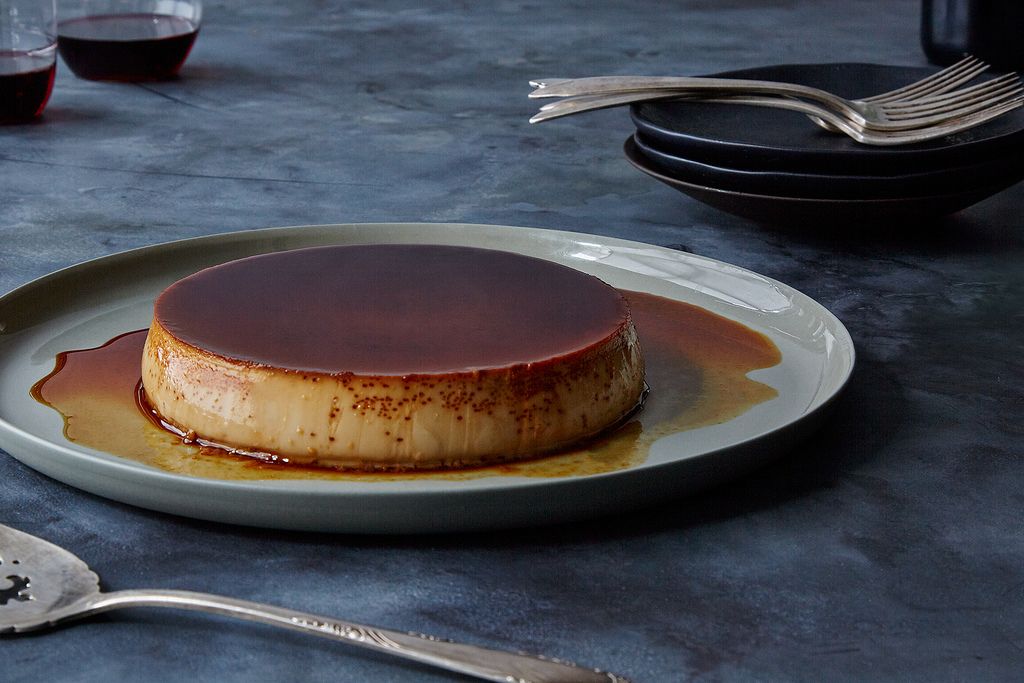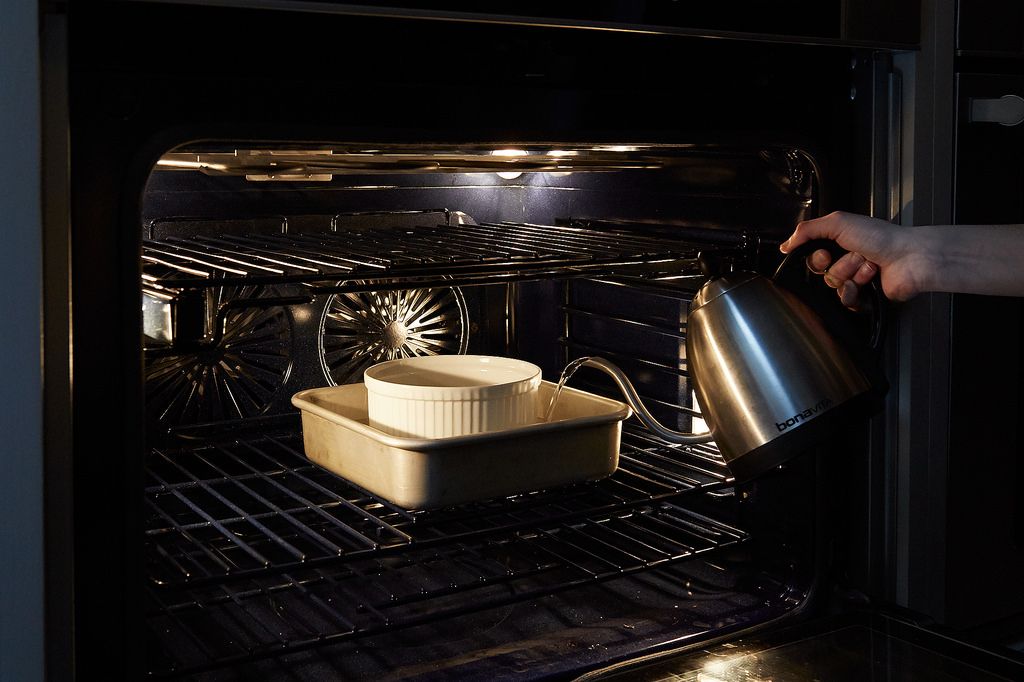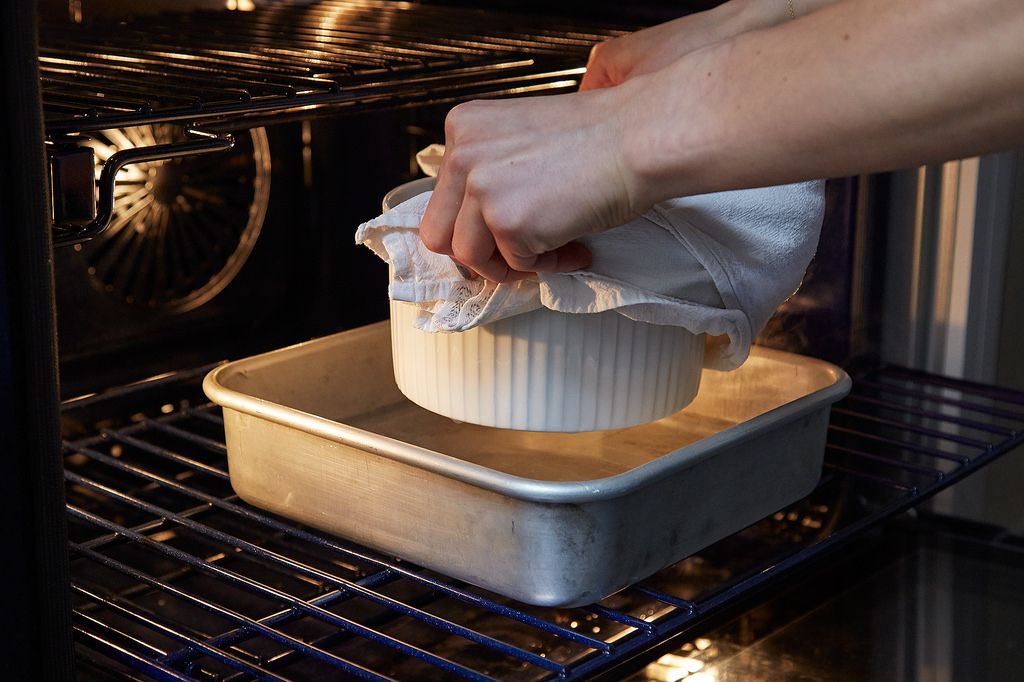Popular on Food52
Continue After Advertisement
17 Comments
Shed
July 1, 2021
Hi after a while of baking time, the water starts boiling inside and splashing all over. I only added water as directed. Will it damage the oven? And if the oven is fan operated how can we set the heating elements?
Caroline T.
August 3, 2016
Any suggestions for cooking a cheesecake in a springform pan in a bainmarie? Even with 2 layers of heavy duty foil I often find water has made its way in.
Sunnydrop
September 13, 2016
I had the same problem too until I saw on Masterchef TV that 3 layers of foil were necessary to prevent water from seeping in. I tried it and it worked.
bonnie
May 26, 2015
Having made literally thousands of creme brulee and other custard based desserts, I have found two things: It is not necessary to have the water for the bain marie boiling (super hot tap water works just fine), but my big secret for smooth as silk custard based desserts is to make the batter the day before baking and let it rest over night. Cover with plastic wrap sitting on top the batter (so a skin does not form) and once cool, put it in the refrigerator over night. Bake off the next day and the results are incredible. This was taught to me by one of my employers, Henri, a French chef who taught me many great things.
AntoniaJames
May 27, 2015
So true, bonnie. Thanks for pointing this out. You also get a much better tasting custard. ;o)
Lynn S.
May 26, 2015
Sure wish you had used a better picture for this flan (creme caramel). The bubble holes in the sides, just below the caramel show that it was over-baked. A smooth, silky custard will be done when there's thin, golden ring around the edge and the top is only a touch raised. When a slight shake of the pan makes the custard jiggle firmly, it's done, but won't have those swiss-cheese holes in the sides.
Can I.
May 26, 2015
Another tip for making sure your custard dish doesn't slide around in the larger pan is to put a dish towel in the bottom of the larger pan before adding the custard dish and the water. Depending on the size of the larger pan, you may need to fold the towel; it should be completely submerged in the water.
AntoniaJames
May 26, 2015
Not a tip about the method per se, but just a suggestion. I use a bain marie when making bread puddings of all kinds. It makes all the difference in the world as it produces a lighter, silkier custard. ;o)
AntoniaJames
May 27, 2015
Kenzi, I also use a bain-marie for this pudding that's similar to a bread pudding, but is made with pound cake (or leftover fruit cake or dry plum pudding) instead of bread: https://food52.com/recipes/31847-devonshire-pudding
LoloinChicago
March 16, 2024
You are mentioning all of my favorite desserts! Do you think it is worth investing in a fancy bain marie (e.g. Mauviel) if I intend to make a lot of custards, etc..., or should I make a bain marie the old fashioned way?
aargersi
May 26, 2015
I always start my flan in a cold oven with cold water as opposed to heating both - I find the the gentle heating up process makes for a smoother custard ... I just add 15 or 20 minutes t the cooktime to acocunt for the heating-up period. It's easier this way too! No burns!
Laura415
April 22, 2017
Interesting...I just checked with CI and they recommend to use boiling water after trying cold water/hot oven, room temp water/hot oven and boiling water/hot oven. I would have thought they would try a cold water/cold oven combo.
Terely H.
April 22, 2018
Great ideas. Thank you!
My question:
When I use aluminum loaf pans in a water bath it turns the part immersed in the water dark gray. Any way to avoid that?
My question:
When I use aluminum loaf pans in a water bath it turns the part immersed in the water dark gray. Any way to avoid that?
Idaly R.
May 18, 2020
I’ve been looking for a solution to this for several months too. Only solution I’ve seen is using a ceramic or glasss pan with metal pan, not metal and metal. I’m looking for another option like adding baking powder, baking soda, vinegar something. I am looking to make many of these and would like to use the large aluminum pans used in chaffing stands for the Bain Marie.





See what other Food52 readers are saying.